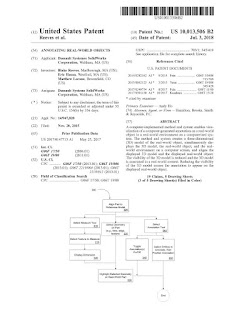Bellsaint has created a haunting version of Losing My Religion. I don't think anyone can truly say this version is better than REM's original. However, Bellsaint has taken a unique spin on this old classic which transcends the concept of "cover" to become its own brilliant song. For me, I'll listen to the original REM song when I want the gritty and off-beat 1990's feel, and I'll listen to Bellsaints version when I want melodic and haunting experience. This newer version by Bellsiant is distinct enough to allow one to listen to both versions back to back without any boredom or feeling of repletion. I don't know much about Bellsaint's other releases, but I love this particular song, which is why I added it to my digital music collection.
My personal glimpse into the first half of the 21st Century for some yet to be known future
Search This Blog
Monday, November 15, 2021
Tuesday, November 02, 2021
Patents issued, so far
A while a go, I realized that there's events which I've added to Facebook but not my own blog. Anyway, I'm going to add some of that now. Here's a list of my issues patents so far. (Not included are international patents for the same inventions.)
Thursday, October 28, 2021
A wikipedia article all grown up: Brine Pools
So, why all this talk about brine pools now? Well, at that time, I was interested to learn more about them. Upon searching the topic on the Internet, I found nearly nothing. Wikipedia didn't even have an article about brine pools. That means it was up to me to create the article. The only thing I had to go on was what I remembered from the nature show. So, all I could say was this:
"Brine pools have been discovered at on the ocean floor near methane vents. Lifeforms around these pools do not depend on the sun for energy."
That's it. That was the whole article. It's dangerous (metaphorically) to add articles to Wikipedia. Wikipedia is a vicious and uncaring environment with nearly draconian rules about what can stay and what must be removed. It's doubly risky (again, metaphorically) to create an article with only one sentence for a topic that isn't well know. The final risk is posting such an article without any citations.
By some miracle, the brine pool Wikipedia article grew. This happened due to other editors adding more detail and cited sources. Images were added soon after. I kept an eye on the article and helped edit it further from time to time until late 2010. At that time, the article grew to include a couple of images and three subheadings, each with a short paragraph. By the Wikipedia measure, it was "2,960 bytes".















